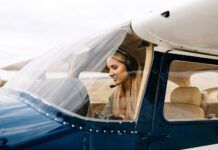It’s Too Expensive, That’s Why
I read with interest—and a chuckle at the question why no one wants to be a pilot today—your editorial, “Pilot Shortage Arrives” in April 2013. Bottom line is that it’s just too damned expensive. Getting into the game costs tens of thousands and takes precious time people do not have these days. They see no value in being a pilot. People today have many alternatives for their hard-earned discretionary/recreational funds.
I’ve been flying 20 years, am instrument rated and have a 40+ year-old Piper. I fly 30-40 hours in a good year and am spending more money, way too much money, to support my addiction than is reasonable. Hangar fees, annuals, parts, certifications and cost of databases are outrageous by themselves without adding the cost of my FAA medical, insurance and breathtakingly expensive gas. Why would anyone in their right mind get involved in something that costs tens of thousands to enter and then thousands of dollars a year for a handful of hours of enjoyment?
Me? I’m addicted. I’ll keep throwing money down the rat hole until the FAA cuts me off at the medical knees. Rehab is out of the question for me.
Ken Mason
Owasso, Okla.
A Sim Is Good For That
After reading and enjoying Jeff Van West’s “What’s a Sim Good For?” (March 2014), I realized that my best use for a simulator is to do things that I wouldn’t or couldn’t do in an airplane.
I’ve recently put some 30 hours in our flight school’s simulator, doing things like turnbacks (impossible turns) from varying altitudes and positions; landing on roads, rivers and other unusual emergency landing sites; spin entry and recovery, though a Cherokee is too stable to be a good platform for this; loops, rolls and unusual attitudes, although I think they need more horsepower (in the CPU?); mountain flying into box canyons, complete with a life-saving mush/stall into the trees at 12,800 MSL; and hot and high departures.
Of course, I also have been mixing in a few fun things like landing on an aircraft carrier off of San Francisco; flying under, or trying to land on fun bridges like the Golden Gate; touring the grand canyon; flying in and out of mega-airports I’d never visit—LGA, JFK, EWR, SFO, etc.
Daniel Spitzer, MD
Suffern, N.Y.
Praise to Jeff for his excellent article on the purpose and uses of aircraft simulators and flight training devices in the general aviation field. I, too, run into fellow pilots who are nervous about how simulators can be so helpful to general aviation flying. Thanks for explaining that the use of these tools is all up to the personal needs and wants of the pilot.
The important thing is that these tools have recently gotten more realistic and faithful to the actual experience of flight, enabling even the most modest simulator to become an important element in proficiency. I hope that simulators will continue becoming a training tool that cuts some of the cost of flight training and proficiency work.
As a veteran pilot of over 20 years, I enjoy using X-Plane at home to stay safe and proficient in many different models of aircraft.
Benjamin (Ben) Evans
Pickerington, Ohio
I’ve used various desktop simulators, but I’m frustrated that there’s no way to simulate a specific aircraft or configuration unless it’s one of the options available. In this day and age, shouldn’t it be simple enough to have a near infinite choice of aircraft and equipment?
Dave Randall
Naples, Fla.
Jeff Van West, Redbird’s Director of Media, replies:
There’s currently no good way to create a full representation of a specific aircraft, and I’ve thought there’s probably a niche business in there for someone. It’s on the long roadmap for Redbird, but the cost-to-payback ratio on it is pretty slim, so it’s not as high a priority as many would like. I wish I had a better answer for you, but you pretty much have to roll your own solution if you don’t have a common aircraft and panel combination.
What’s Your Category?
While your answer to question seven in the January 2014 “Killer Quiz” (about approach categories) errs on the side of safety, it is technically incorrect. The aircraft in question only falls into one approach category regardless of how fast it is flying. The category is defined by the FAA as VREF (or 1.3 times VSO).
David C. Ison, Ph.D.
Assistant Professor of Aeronautics
Embry-Riddle Aeronautical University
Of course, you are correct, Professor. However, your answer is incomplete in that it only deals with the definition, not the application, of approach category. From AIM 5-4-7:
A pilot must use the minima corresponding to the category determined during certification or higher. Helicopters may use Category A minima. If it is necessary to operate at a speed in excess of the upper limit of the speed range for an aircraft’s category, the minimums for the higher category must be used.
They use a similar situation to the one in our quiz as an example:
As an additional example, a Category A airplane (or helicopter) which is operating at 130 knots on a straight-in approach must use the approach Category C minimums.
Note that the AIM leaves no room for interpretation through the use of “must.” Of course, the AIM isn’t as regulatory as 14 CFR, but pilots can be and have been busted for careless/reckless if not complying with the AIM when something goes awry.
Still Turned Around
The recent article by Evan Cushing “Gettin’ Turned Around” (March 2014) was excellent but raised a couple of questions for me. I am unsure of the meaning of “Procedure Turn fix altitude” and “PT completion altitude.” I looked in the Pilot/Controller Glossary but do not find those terms.
I also would like confirmation concerning the appropriate maneuver to become established on the PT outbound from the holding pattern described at HLN VORTAC. Would you cross HLN then execute a standard-rate right turn in the holding pattern, continuing the turn to intercept the 086 radial? You’d then fly outbound and execute the PT normally. Is that correct?
Frank Middleton
Dawson, Ga.
It doesn’t look like the procedure turn altitudes we commonly talk about are officially named or defined. The terms asked about are:
PT fix altitude—if depicted or assigned by ATC, the minimum altitude at which you must cross the fix outbound.
PT completion altitude—the minimum altitude to which you may descend while in the actual PT.
Of course, when there is an intermediate segment on the approach, once you’ve intercepted final, there may be another lower altitude to which you can descend from the PT completion altitude.
As Evan pointed out in the article, there is no prescribed maneuver or procedure that is required to be followed in situations like at HLN, so long as you remain within the protected area. What you suggested is probably the most common maneuver, but you must remain acutely aware of the 10-mile restriction as it’ll be easy to break. An alternative is to just descend on an extended outbound leg in the hold and turn inbound on final (266 degrees) when there’s enough distance from the VOR to reach MDA in a normal descent before the VOR.
Something fast and with good situational awareness—a good moving map—probably favors extending the holding pattern outbound leg. Something slow, or without good SA, probably lends itself better to intercept the final approach course outbound as you suggest.
We read ‘em all and try to answer most e-mail, but it can take a month or more. Please be sure to include your full name and location. Contact us at [email protected].




